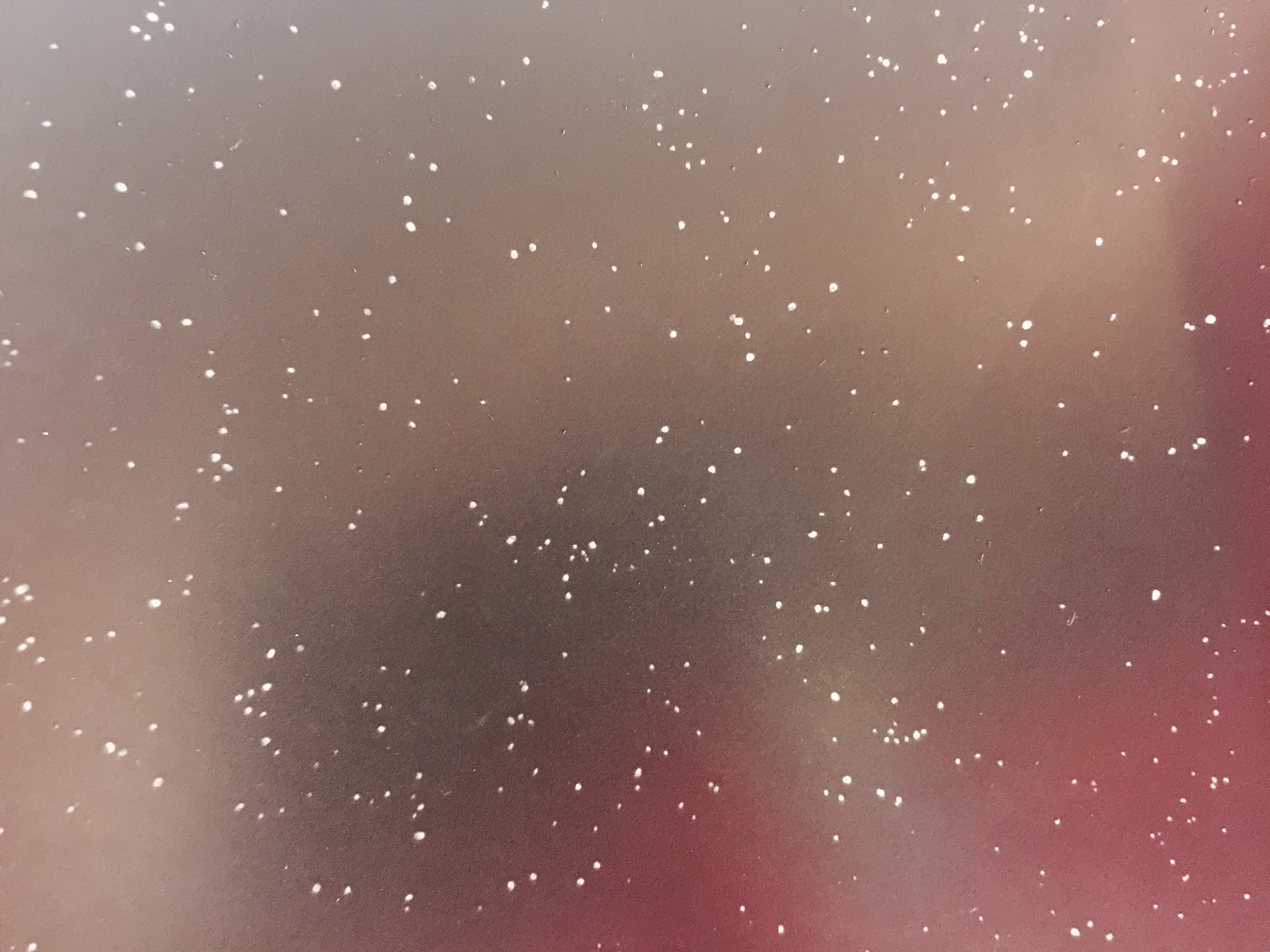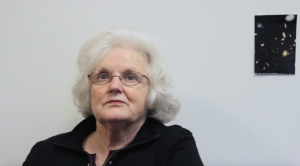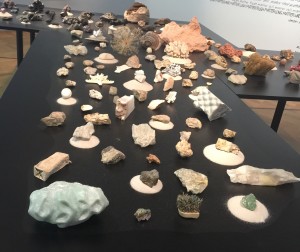What Do We Do with the Universe?
We Gaze
“Wonder is the beginning of all wisdom,” says Aristotle in Metaphysics.
“And looking into the starry sky is the beginning of wonder,” say I.
Andrew Yang starts his Interviews with the Milky Way by asking his mother, Ellen,
“When you were a child, did you ever look up at the stars?”
For Ellen, childhood has long departed, as the moon has dyed all her hair. However, she answers with the greatest clarity,
“Oh yes, oh yes,” she replies, “we were trying to see the milky way.”
Gazing into the sky and wondering about the universe is not an experience limited to any one generation. Andrew makes it clear that it is so profoundly shared by human beings that it almost becomes an instinct. Later in the interview, he talks about his daughter, Stella, who asks him since the outer space is above the sky, what is above the outer space.
The directional and intentional gaze into the night sky, then, is our first conscious encounter with the universe. Because of the gaze, the universe enters our sight and our mind. Now, it does not only objectively exist, but also exists to us.
We Know
In our galaxy, there are at least 100 billion stars.
In an infant, hydrogen makes up 9.5% of its body weight, carbon, 18.5%, and oxygen, 65%.
In A Beach and All Things Being Equal, we are educated of these pieces of information.
While it is true that wisdom starts with wonder, it does not end with wonder. Instead, we study and seek answers to our wonders. Just like Jeff, an astrophysicist says in Interviews with the Milky Way, “The most important thing you know about the universe is that, it is comprehensible.” That is, we can know about the universe.
After we gaze at things in the universe, we name them, analyze them, and attach information to the names. As a result, we pin the things down, and “know” the universe. In other words, things in the universe do not disappear or get lost as we move our eyes away, but are captured by us because we “know” them, just as Andrew makes a beach of 100 billion grains of sand, and just as he lists the chemical component of his daughter.
We Identify
In All Things Being Equal, tap water, rock sugar, canola oil, powdered L-Arginine, three oyster shells, baking powder and vinyl are placed in seven glass containers. According to a calculation next to the piece, these object and Andrew’s daughter, the new-born Stella share 99% of chemical elements.
In The Way Within, we see a table of objects ranging from a rock to a juice container, from a shell fish to a Ming lock, and from maple leaves to Lego pieces. All objects are mild in color, with pale turquoise on one side of the table, and blanched almond on another. When placed together, they display a surprising unity. At a point, you feel they are more similar than different because of their color, shape, size, and even the vibes they are giving out, and the distinction between “natural” and “man-made,” between “nature” and “culture” starts to seem arbitrary.
In Interviews with the Milky Way, Jeff agrees that he sometimes “thinks of himself as the Milky Way,” whereas Ellen calls the Milky Way “the ultimate life giving entity,” that is, a mother just like herself.
As we gather more facts and know more about the universe, we naturally form feelings about it and express them. Andrew’s art is one such example, announcing this sense of identification:
Our bodies are similar to the bodies of other galactic matters.
Our products of culture are similar to the products of nature.
We are similar to the universe.
All We Have are the Connections We Make
Andrew’s project walks us through what we do with the universe, from gazing, to knowing, to identifying. The underlying and overarching in all three becomes more evident as we go further. That is, they are all ways in which we connect with the universe, and one deeper than another.
By gazing, we connect. We stretch the invisible line between our eyes and the object, and realize not only we ourselves exist, other things in the universe, too, exist. That is, we share the time and space with objects in the universe.
By knowing, we connect. We use the human faculty to understand, so that objects reside in our minds as ideas. That is, we incorporate as part of us the objects in the universe.
By identifying, we connect. We acknowledge shared natures we have with objects in the universe. That is, we are the objects in the universe.
Andrew’s project not only reminds us of these connections, but also their importance. Being vast and grand, the universe does not intimidate us mortal beings. Instead, it empowers us. On the one hand, we are promised of knowledge, that we can know things beyond ourselves. Jeff says that because studying the universe makes him realize he is able to contemplate about things beyond himself and beyond people, it gives him a sense of “wellbeing.” On the other hand, we are assured of company, that we are not the lonely powerless beings, but have connections to something eternal. Ellen says that when she dies, rather than going to the heaven, she would prefer to be attached to a star, and that would make her “feel better.”
In other words, through the connections with the universe, we are able to obtain knowledge and feel that we belong, both conducive to happiness. And happiness, according to Aristotle, is the ultimate human end.
To Connect, to Connect Deeper
The project, however, is not just a reminder. Instead, it encourages, and even urges us to actively make these connections ourselves because these connections do not necessarily come naturally. As Ellen remarks, “Where I lived the sky was clear. You could see stars. But when [Stella] looks into the sky, she sees something entirely different than I did at the same age.” Andrew addresses the issue that light pollution denies access to the night sky from urban dwellers, and creates A Beach to “substitute” the Milky Way. The installation of seven tons of sand, although of course not the Milky Way, pushes the urban dwellers who go into the dim room filled with white noise to think of the Milky Way, and identify with the Milky Way.
Also, Andrew is inspiring his audience to make deeper connections with the universe. Whereas science gathers facts and data, art arouses human emotions, thus striking directly at the core of human soul. With science, we can know the chemical component of a human infant and of the inanimate objects in the universe. However, when Andrew juxtaposes the two in All Things Being Equal, he sets the example that art brings the connection of “knowledge” to the higher level of connection, that is the connection of “identification,” leaving a stronger impression and impact on the audience.
The project is utterly beautiful.
I have often wondered why at the moments when we look up into the sky, when it cannot be clearer that we are small and we are mortal, we rarely feel worthless.
Andrew seems to be providing this poetic answer: Through a gaze, and starting from the gaze, we make connections with the universe. We become part of it, we get to know it, and we become it.Saved by a gaze, we are not at all small, not at all mortal, and not at all worthless.





1,113 Comments
also figures in most visually appealing method. PG SLOT AUTO WALLET
I hope you continue to write good PG SLOT AUTO WALLET
nice blog pussyslot
All of your information are commendable pussyslot
quality articles like this. pussyslot
that not only charm yet additionally aid us เว็บสล็อต 168 ฝาก ถอน true wallet
also provide exceptional related information that เว็บสล็อต 168 ฝาก ถอน true wallet
Thanks for Information. เว็บสล็อต 168 ฝาก ถอน true wallet
learn numerous factors. Thanks for posting! สล็อตวอเลท
grips the emphasis of readers. สล็อตวอเลท
Good Article!. สล็อตวอเลท
I scrolled down in your blog, slotxo wallet
I commend every single point of view supplied in slotxo wallet
Nice post. slotxo wallet
as I see, สล็อต ฝาก-ถอน true wallet ไม่มี บัญชีธนาคาร
this blog post. สล็อต ฝาก-ถอน true wallet ไม่มี บัญชีธนาคาร
I learn something totally new สล็อต ฝาก-ถอน true wallet ไม่มี บัญชีธนาคาร
it’s helpful. สล็อตเว็บตรง
Wish others will certainly additionally สล็อตเว็บตรง
challenging on blogs สล็อตเว็บตรง
I read some articles PUSSY888 เว็บตรง
desire to review it. PUSSY888 เว็บตรง
I stumbleupon everyday. PUSSY888 เว็บตรง
Great post 918KISS AUTO
I hope you write more articles like this. 918KISS AUTO
It’s always useful to read through 918KISS AUTO
found valuable information. สล็อตjili วอเลท
I’m your biggest fan. สล็อตjili วอเลท
content from other authors สล็อตjili วอเลท
You may be interested in reading about indoor gardening. ສລ໊ອດອອນລາຍ
You are the first today to bring me some interesting news. ສລ໊ອດອອນລາຍ
use something from other sites. ສລ໊ອດອອນລາຍ
Here is my best article about Betflix wallet
I cherished taking a look at Betflix wallet
Valuable info. Betflix wallet
I appreciated going over this handy สล็อตฝากถอนวอเล็ท
this functional information given out สล็อตฝากถอนวอเล็ท
Fortunate me I discovered your website by chance, สล็อตฝากถอนวอเล็ท
I am surprised why 918kissauto
this accident didn’t happened earlier! สล็อตออนไลน์
Wow, What a Excellent post. I really found this to much informatics. It is what i was searching for.I would like to suggest you that please keep sharing such type of info.Thanks download apk nekopoi
Great information shared So happy to read this post. สมัคร kingmaker slot
Another useful tip is to actively use the opportunities of online courses and webinars provided by well-known universities, companies and professional organizations.
This will allow you to access up-to-date information and expert knowledge from various industries.
Finally, don’t forget to network by connecting with professional communities to share ideas and recommendations for quality educational resources.
Consider individual needs and learning styles.
Choose the resources that best suit your temperament and way of learning information.
Also, do not forget the possibility of using multimedia tools, such as video, audio and interactive applications, for more effective learning.
Actively engage in discussions and exchanges with other students or professionals in your field to increase your knowledge and understanding.
Don’t be afraid to experiment with different learning methods and sources to find the ones that best suit your needs and goals.